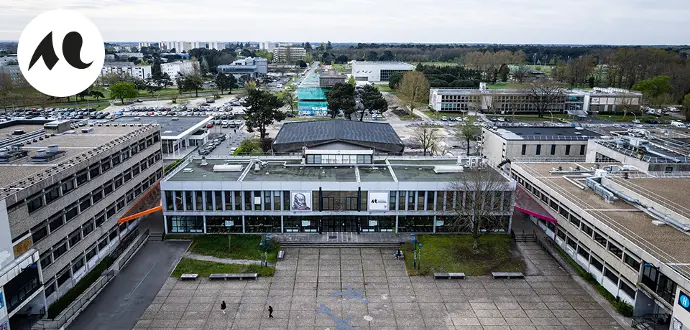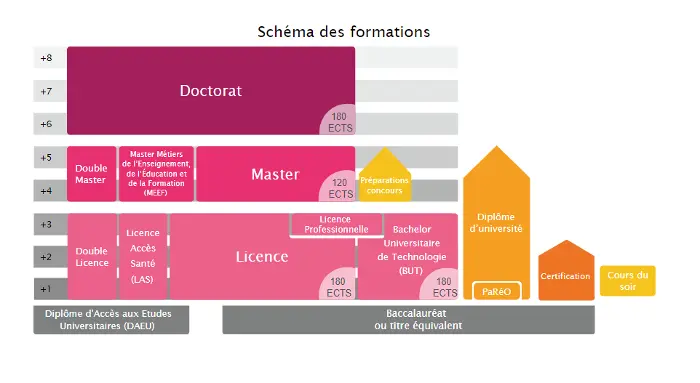Bordeaux Montaigne University, located in Pessac near Bordeaux, is one of the most prestigious higher education institutions in France. Founded in a rich historical context, it has evolved over the centuries to become a reference in the humanities, social sciences and the arts. This article traces the history of this institution, from its origins to today.

Origins
The roots of Bordeaux Montaigne University date back to the 16th century, when Bordeaux was an important intellectual center. The city already had schools of law, medicine and theology. In 1441, Pope Eugene IV authorized the creation of a university in Bordeaux, but it was not until the early nineteenth century that higher education began to take a structured form with the creation of faculties.

The Creation of the University of Bordeaux
The University of Bordeaux as we know it today was officially founded in 1896. It originally consisted of four faculties: law, medicine, literature, and science. The faculty of letters, in particular, is the direct precursor of the current University Bordeaux Montaigne.

Evolution and development
After the Second World War, the need for higher education increased considerably, leading to a rapid expansion of French universities. In 1968, after the events of May 68, the University of Bordeaux split into three separate institutions to better meet specific academic needs: Bordeaux 1 (science and technology), Bordeaux 2 (medicine and life sciences), and Bordeaux 3 (humanities).



The Birth of Bordeaux 3 and the Modern Era
Bordeaux 3, now known as Université Bordeaux Montaigne, was officially created in 1970. She specializes in literature, languages, arts, humanities and social sciences. In 1990, the university adopted the name of Michel de Montaigne, in honor of the famous Renaissance philosopher, symbol of humanism and freedom of thought.

Michel de Montaigne
Michel Eyquem de Montaigne, lord of Montaigne, better known by the simple name of Montaigne, born on February 28, 1533 and died on September 13, 1592 at the castle of Saint-Michel-de-Montingne, is a French philosopher, humanist, writer scholar and moralist of the Renaissance. Wikipédia
Expansion and Reform
During the 2000s, Bordeaux Montaigne University continued to develop, offering a wide range of bachelor, master and doctoral programs. It forms international partnerships and participates in numerous research projects. In 2014, it adopted its current name, from Université Michel de Montaigne Bordeaux 3 to Université Bordeaux Montaigne, to strengthen its identity and visibility on a global scale.
Installations
Bibliothèque de Lettres et Sciences humaines
- Located in the BU Droit-Lettres building (including the Atrium at its entrance)Atrium
Bordeaux Montaigne University Today
Today, Bordeaux Montaigne University is headed by Lionel Larré, president of the university since 2020. Before taking up his current position, Lionel Larré was Director of the UFR Langues et Civilisations of the Université Bordeaux Montaigne from 2017 to 2020.

Lionel Larré Président de l’Université Bordeaux Montaigne
Conclusion
Bordeaux Montaigne University, with its roots rooted in the academic history of Bordeaux, has gone through many phases of transformation since its creation. From its modest beginnings in the 16th century to its official establishment in 1896, then its specialization in humanities in the 1970s, the university has evolved to meet the educational requirements of each era. Today, it continues to develop and adapt, undertaking ambitious projects to modernize its infrastructure and improve student life. By combining tradition and innovation, Bordeaux Montaigne University is positioning itself as a dynamic and essential player in higher education in France.







History of Bordeaux Montaigne University: From its Origins to Today